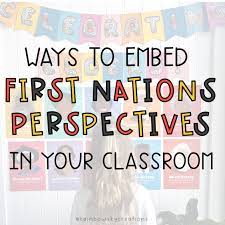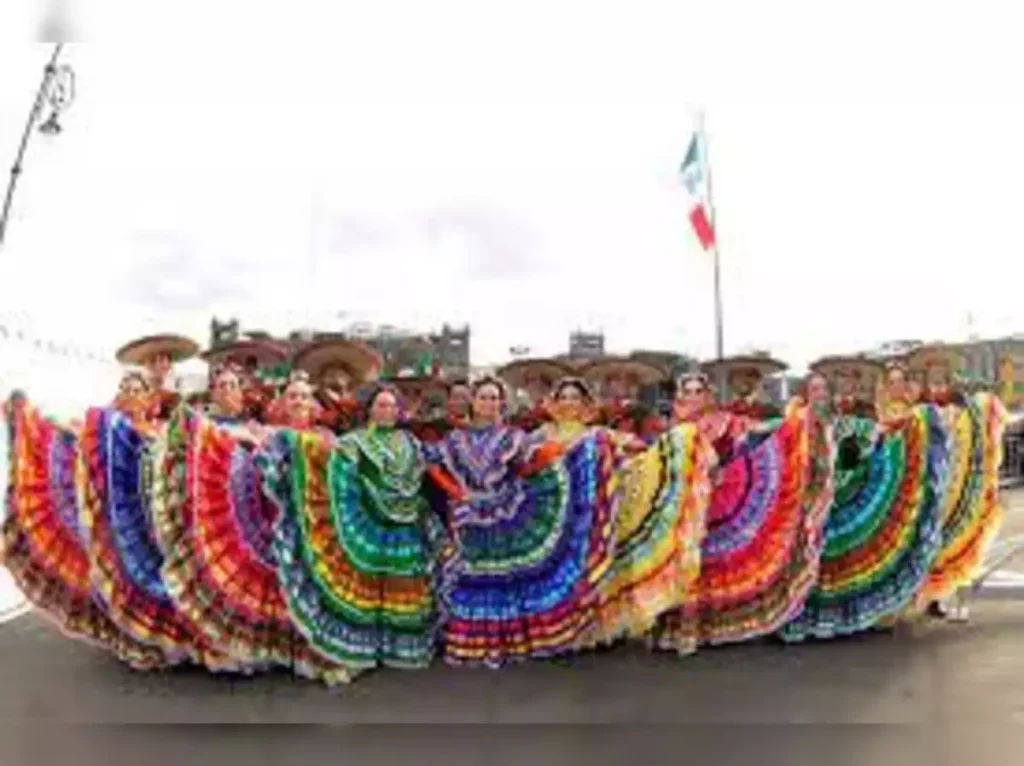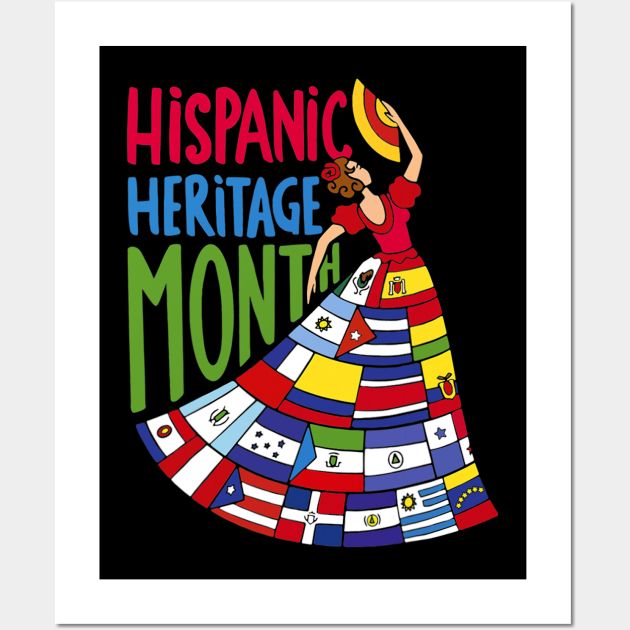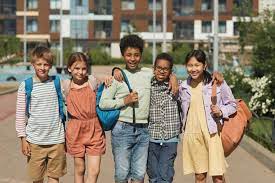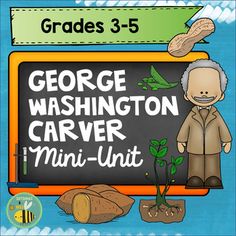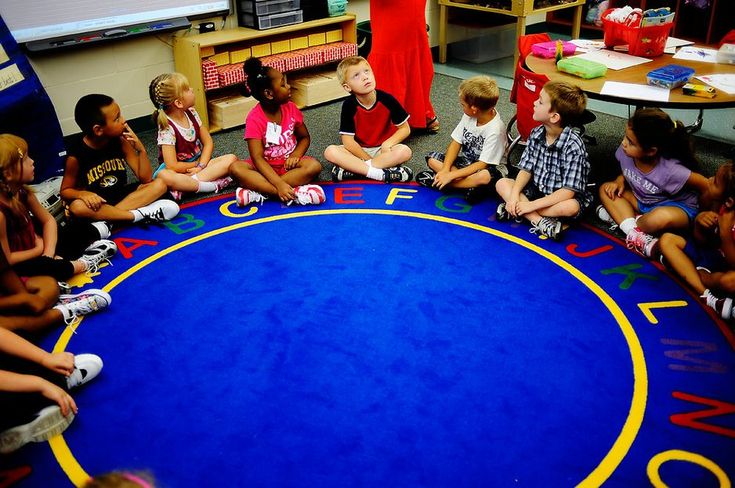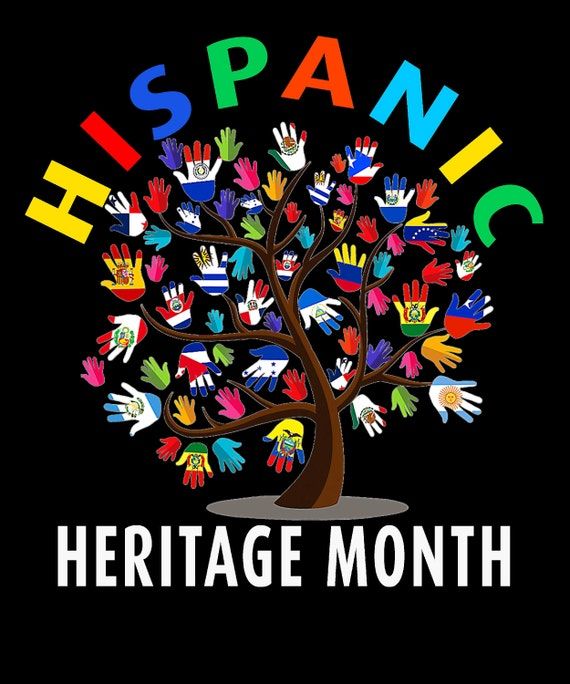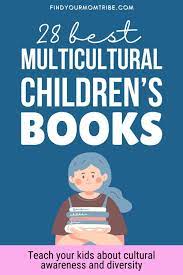Educators are increasingly recognizing the importance of integrating First Nations perspectives into classroom instruction as a means of broadening students’ understanding and appreciation of indigenous cultures and histories. This integration can provide a more comprehensive and inclusive educational experience for all students, promoting respect and reconciliation between indigenous peoples and wider community members.
Incorporating First Nations perspectives into the classroom not only enriches the educational journey but also acknowledges the traditional custodians of the land on which schools operate. It helps in rectifying historical omissions and inaccuracies about First Nations people within mainstream education systems. To genuinely embed these perspectives, several strategies can be adopted:
Curriculum Design:
A starting point is the development of a curriculum that includes First Nations histories, cultures, languages, and contemporary issues. This principle applies not only to subjects like history or social studies but can also be woven into science (indigenous knowledge systems), literature (First Nations authors), and even mathematics (patterns in art).
Community Engagement:
Engaging with local First Nations communities is crucial. Partnerships can lead to co-created programs, inviting elders and knowledge keepers into schools to share oral histories, participate in ceremonies or assist with language programs.
Professional Development for Teachers:
Teachers need proper training to incorporate First Nations perspectives effectively. This includes learning about cultural sensitivity, historical contexts, teaching techniques that honor oral traditions, and being comfortable with addressing complex topics like colonization.
Creating Inclusive Environments:
The classroom environment itself should reflect First Nations cultures visible through artwork, maps, flags, or resources made available. Celebrating significant dates for First Nations communities can also foster inclusivity.
Active Participation in Reconciliation Activities:
Schools play a key role in fostering reconciliation between indigenous peoples and non-indigenous Australians. Educational institutions can encourage student participation in events like National Reconciliation Week or NAIDOC (National Aborigines and Islanders Day Observance Committee) Week.
Resource Development:
Developing teaching materials that accurately represent First Nations perspectives requires collaboration with First Nations educators and organizations to ensure cultural appropriateness and accuracy.
Student-Centered Learning Approaches:
Encouraging students to take the lead creates an environment in which they learn directly from First Nations individuals and resources, delving into projects that are both meaningful and informative.
Assessment Adaptation:
Assessments should allow students to demonstrate their understanding of First Nations perspectives through a variety of methods such as storytelling, art projects, or community involvement activities.
By actively engaging with these strategies, educators will not only pay homage to the traditional owners of the land but will also contribute significantly to the development of well-rounded students who are better prepared as global citizens with a deep respect for diversity and history. Embedding First Nations perspectives is more than an educational preference; it’s a commitment to social justice and equity within the schooling system.
20 Activities To Celebrate Mexican Independence Day
1. Attend a local parade: Many towns and cities host vibrant parades featuring colorful floats, traditional clothing, and folk dancing.
2. Watch reenactments: Take part in or watch reenactments of key events like Miguel Hidalgo’s famous “Grito de Dolores,” the cry for independence.
3. Cook traditional Mexican dishes: Embrace the flavors of Mexico by preparing authentic dishes such as chiles en nogada or mole poblano.
4. Host a Mexican-themed party: Gather your friends and family to share food, music, and fun while celebrating Mexican culture.
5. Decorate with the colors of the Mexican flag: Show your pride by sporting green, white, and red attire or embellishing your home with these colors.
6. Attend a mariachi concert: Enjoy traditional Mexican music with skilled mariachi performers who may play classics such as “Cielito Lindo” or “El Son de la Negra.”
7. Participate in a live Lucha Libre match: Experience firsthand one of Mexico’s favorite pastimes – the famous wrestling matches filled with excitement and drama.
8. Visit an art exhibit celebrating Mexican art: Discover works by renowned artists like Diego Rivera, Frida Kahlo, or David Alfaro Siqueiros that embody the spirit of Mexico.
9. Learn about indigenous cultures: Educate yourself about Mexico’s rich indigenous heritage by visiting cultural centers or museums highlighting native art, language, and history.
10. Attend a fireworks show: Cap off your day by enjoying an impressive fireworks display that symbolizes Mexico’s victory over Spanish rule.
11. Dance to Mexican folk music: Grab your dancing shoes and learn traditional dances such as the jarabe tapatío, also known as the “Mexican Hat Dance.”
12. Participate in a Mexican cooking class: Hone your culinary skills by learning how to make tortillas, tamales, or even ceviche from an experienced chef.
13. Practice your Spanish skills: Engage in conversation with native speakers to improve your language abilities and deepen your understanding of Mexican culture.
14. Watch Mexican films: Immerse yourself in the world of Mexican cinema by watching classic movies like “El Ángel Exterminador,” “Amores perros,” or “Y tú mamá también.”
15. Create traditional crafts: Learn how to make papel picado, piñatas, or alebrijes to add a festive touch to your home.
16. Attend a lecture on Mexican history: Gain knowledge about Mexico’s rich past and understand the origins of its national identity.
17. Raise funds for charity: Organize a charity event benefiting causes relevant to Mexico, such as education, healthcare, or disaster relief efforts.
18. Visit historical sites: Embark on a journey to key landmarks like the National Palace in Mexico City or Hidalgo’s birthplace in Pénjamo, Guanajuato.
19. Support local businesses: Shop at markets selling traditional handicrafts and support artisans from different regions of Mexico.
20. Taste-test tequila and mezcal: Sip on agave-based spirits while indulging in a variety of Mexican tapas or antojitos mexicanos.
24 Fun Hispanic Heritage Activities for Middle School
1.Cultural presentations: Have students research and present on the history, traditions, and culture of a specific Hispanic country.
2.Art projects: Encourage students to create artworks inspired by famous Hispanic artists like Frida Kahlo, Diego Rivera, or Pablo Picasso.
3.Dance lessons: Teach traditional Hispanic dances like salsa, merengue, or tango during physical education classes.
4.Film screenings: Organize a movie night showcasing films from different Hispanic countries or featuring Hispanic actors.
5.Potluck celebration: Host a potluck where students bring dishes representing their chosen Hispanic country and share their culinary creations with classmates.
6.Guest speakers: Invite local community members from Hispanic backgrounds to share their experiences and stories with the students.
7.Spanish language classes: Integrate basic Spanish language lessons into class curriculum to familiarize students with the language spoken in many Hispanic countries.
8.Music appreciation: Explore various styles of Hispanic music, including mariachi, flamenco, and reggaeton, and have students discuss what they learned with their peers.
9.Cultural scavenger hunt: Create a cultural scavenger hunt where students search for clues related to Hispanic customs and traditions throughout the school.
10.Clothing day: Encourage students to wear traditional clothing from different Hispanic countries for a day to promote cultural appreciation.
11.Book club: Start a book club focused on literature from Latin American authors such as Gabriel García Márquez or Isabel Allende.
12.Field trip: Visit a local museum dedicated to Hispanic art and culture.
13.Traditional games: Learn about games popular in Hispanic cultures (e.g., Loteria, dominos) and play them in class or during lunchtime.
14.Classroom decorations: Decorate your classroom with flags, posters, and art pieces representing various Hispanic countries, fostering an inclusive environment.
15.Biographies: Have students research and present on influential Hispanic figures like Sonia Sotomayor, Cesar Chavez, or Dolores Huerta.
16.Virtual tour: Take a virtual tour of a Hispanic landmark or city using Google Earth or other online resources.
17.Pen pals: Set up a pen pal program with a school in a Spanish-speaking country, promoting international friendships and language learning.
18.Food tasting: Provide samples of popular Hispanic dishes in the classroom, allowing students to experience new flavors and cuisines.
19.Hispanic history timeline: Construct a classroom timeline of significant events in Hispanic history, featuring important dates and figures throughout centuries.
20.Country focus weeks: Dedicate one week each to different Hispanic countries, addressing their unique traditions, customs, and attractions during daily lessons.
21.Map skills: Teach students about the geography of Hispanic countries by practicing map skills and providing an understanding of their physical locations.
22.Puzzle time: Create crosswords or word searches using vocabulary words related to the Hispanic countries or culture for some fun language practice.
23.Cultural comparisons: Have students compare and contrast two Hispanic countries based on their history, customs, beliefs, languages, or currency systems.
24.Local community events: Attend any local Hispanic Heritage Month events to deepen the connection between students and their community while introducing them to cultural celebrations outside the classroom.
20 Cultural Diversity Activities for Middle School Students
Introduction:
Cultural diversity is an important aspect of modern society, and it is essential for middle school students to understand its significance. By engaging in cultural diversity activities, students can develop their awareness and appreciation of different cultures, ideas, and ways of life. The following 20 cultural diversity activities are designed to help middle school students expand their worldviews while also fostering relationships and mutual respect among peers.
1. Multicultural Potluck: Organize a multicultural potluck where each student brings a dish that represents their culture or a culture they are interested in learning about.
2. World Music Day: Encourage students to explore music from various cultures by hosting a World Music Day event at your school.
3. International Film Festival: Host a film festival showcasing movies from different countries and cultures.
4. Cultural Storytelling: Invite guest speakers from diverse backgrounds to share stories or folktales from their cultures.
5. Diversity Collage: Have students create a collage that represents their understanding of cultural diversity using images and words.
6. Food Tasting Activity: Provide samples of various foods from different cultures for the students to taste and learn about.
7. Cultural Holidays Calendar: Create a calendar with all the culturally significant holidays celebrated by students in your class or school.
8. Global Map Project: Assign each student a country to research, then have them present their findings on a large world map displayed in the classroom.
9. International Fashion Show: Organize a fashion show where students wear traditional outfits representing various cultures.
10. Museum Field Trip: Arrange a visit to a multicultural art exhibit at your local museum.
11. Cultural Dance Workshop: Invite a dance instructor to teach the class dances from different countries and cultures.
12. Foreign Language Lessons: Introduce basic words and phrases from various languages spoken by students in your class or community.
13. Global Game Day: Teach students how to play games from different countries and cultures.
14. World’s Fair Event: Students can create displays about various countries and host an event where they showcase their cultural knowledge and learn from each other.
15. Cultural Pen Pals: Pair students with pen pals from other countries, encouraging them to exchange letters, learning more about each other’s customs and way of life.
16. Origami Workshop: Invite a local artist to teach students the art of origami whilst discussing its history and significance to Japanese culture.
17. Global Cuisine Cooking Class: Arrange a cooking class where students can learn how to make dishes from different cultures.
18. Cultural Field Day: Organize a day of competitive outdoor games inspired by various traditional games from around the world.
19. Multicultural Book Club: Start a book club that explores literature written by authors from diverse cultural backgrounds.
20. Human Rights Activism: Educate students on global human rights issues, encouraging them to discuss how these concerns affect people from different cultures and devise ways they can contribute positively to these causes.
Conclusion:
These 20 cultural diversity activities for middle school students are designed to foster an inclusive learning environment that celebrates the unique qualities of every student. By engaging in these activities, middle schoolers will develop a deeper understanding and respect for various cultures while making connections with their peers across cultural divides.
Spotlight On Black History: 21 George Washington Carver Activities
Introduction:
George Washington Carver was an African American scientist, inventor, and agricultural pioneer whose work has left an indelible mark on our world. As a prominent figure in black history, it’s essential to celebrate his life and achievements by engaging in experiential learning activities. This article highlights 21 fun and educational activities that will help people from all walks of life appreciate the importance of George Washington Carver’s contributions.
1.Visit the George Washington Carver Museum, Cultural and Genealogy Center to gain a deeper understanding of his life and achievements.
2.Create a botanical art piece inspired by Carver’s botanical illustrations.
3.Explore the many uses of peanuts by trying out various peanut recipes that George Washington Carver developed.
4.Read a biography of George Washington Carver, such as “A Weed is a Flower,” to learn more about his fascinating life story.
5.Plant a “Carver-inspired” garden featuring plants associated with his agricultural innovations like peanuts, sweet potatoes, and cotton.
6.Organize a field trip to the George Washington Carver National Monument in Diamond, Missouri.
7.Watch documentaries or historical films about Carver’s life and accomplishments, like “Inventor of Dreams” or “Struggle & Triumph: The Legacy of George Washington Carver.”
8.Host a science fair with projects inspired by Carver’s inventions and experiments.
9.Create your own art materials using natural pigments derived from plants like those used by Carver.
10.Design a lesson plan on sustainable agriculture inspired by George Washington Carver’s techniques and principles.
11.Reenact scenes from Carver’s life in a skit or play format to teach others about his work as an agricultural scientist.
12.Participate in peanut-inspired competitions, such as creating sculptures from peanuts or hosting a peanut butter taste test.
13.Craft a timeline of significant events in George Washington Carver’s life and examine their historical context.
14.Write a persuasive essay on the importance of George Washington Carver’s contributions to the fields of agriculture, science, and technology.
15.Create a crossword puzzle using essential vocabulary words related to George Washington Carver and his work.
16.Research other African American inventors and scientists who share the same values and principles as Carver, creating a poster presentation that highlights their achievements.
17.Develop a family tree or ancestry map for George Washington Carver to explore his unique roots and heritage.
18.Conduct a hands-on experiment emulating one of Carver’s innovative processes, such as developing a simple bleaching solution or making paper from plant fibers.
19.Learn about crop rotation, an essential agricultural technique promoted by George Washington Carver, and discuss its importance in maintaining soil health.
20.Create a tribute sculpture or art installation honoring George Washington Carver’s impact on agriculture, science, and education.
21.Share your newfound knowledge about George Washington Carver with others by creating an informative blog post or hosting a public presentation.
Conclusion:
These 21 activities offer individuals the opportunity to delve deeper into the life and work of George Washington Carver. By engaging in these enriching experiences, you will gain an appreciation for the importance of black history and the advancement of knowledge through scientific inquiry and innovation. With these engaging activities at hand, everyone can celebrate the legacy of one of America’s most influential agricultural pioneers.
SEN Assemblies and Circle Time: Enhancing Inclusive Learning Environments
Introduction
Special Educational Needs (SEN) assemblies and circle time activities are fundamental components in creating inclusive learning environments for children with diverse learning needs. These activities promote social, emotional, and academic growth while fostering a sense of belonging among students. This article provides an overview of SEN assemblies and circle time, along with helpful tips from Helpsheet 22.
SEN Assemblies
SEN assemblies are school-wide gatherings that focus on acknowledging and celebrating the unique strengths and achievements of all students, particularly those with special educational needs. These assemblies facilitate a culture of inclusivity, empowerment, and mutual understanding among the entire school community.
1.Establish clear objectives: Clearly articulate the purpose and goals of the assembly. Ensure activities promote awareness and understanding of special educational needs.
2.Involve all students: Actively engage every student in the assembly, ensuring they feel included and valued.
3.Recognize achievements: Celebrate the progress and accomplishments of students with SEN by acknowledging their successes through presentations or awards.
4.Encourage collaboration: Foster a sense of teamwork among students by involving them in group discussions and collaborative projects.
Circle Time
Circle time is an interactive session that encourages students to express themselves, share their emotions, listen to others, and contribute to group discussions. Circle time activities allow students with SEN to participate fully in group activities alongside their peers for improved self-esteem, communication skills, and empathy towards others.
1.Set ground rules: Establish guidelines for participation that include taking turns to speak, actively listening to one another, showing respect for different opinions, and maintaining confidentiality.
2.Facilitate open communication: Encourage students to express their feelings honestly without fear of judgment or reprisal.
3.Use visual aids: Use flashcards, role-plays, or games to help convey concepts clearly to children who struggle with verbal communication.
4.Encourage peer support: Promote a mutual understanding and respect among the children, allowing them to develop friendships and support networks within the classroom.
Helpsheet 22 Tips
1.Adapt activities to accommodate for all students: Modify tasks as needed to ensure that each student’s unique needs are met during the activities.
2.Train staff in SEN awareness: Provide adequate training to ensure staff members are knowledgeable about working with students with SEN, allowing them to effectively manage the activities.
3.Regularly review progress: Monitor students’ success during these activities and adjust strategies as needed to better meet their educational needs.
4.Engage parents/guardians: Maintain open communication with parents and guardians about their child’s progress, involving them in SEN assemblies or circle time sessions whenever possible.
Conclusion
Incorporating SEN assemblies and circle time activities in a school setting is essential for creating an inclusive learning environment where every student has the opportunity to thrive. By following the recommendations outlined in this article and Helpsheet 22, educators can better support students with special educational needs while fostering a culture of empathy, understanding, and mutual support among all members of the school community.
Celebrate National Hispanic Heritage Month With These 20 Colorful Classroom Activities
National Hispanic Heritage Month, celebrated from September 15th to October 15th, is a fantastic opportunity for educators to incorporate colorful and engaging classroom activities that honor and celebrate the rich cultural heritage of Hispanic and Latino Americans. Here are 20 activities that you can use in your classroom to celebrate this special month.
1.Create a Heritage Wall: Have students research and display their Hispanic heritage or notable Hispanic figures on a bulletin board or wall in the classroom.
2.Learn about Famous Hispanics: Assign each student to research and present on a famous Hispanic individual who has made significant contributions to society.
3.Celebrate with Music: Teach your students about the different styles of Latin music, such as salsa, merengue, and flamenco. Have fun by playing traditional instruments like maracas and dancing together.
4Explore Hispanic Art: Introduce your students to famous Hispanic artists, such as Frida Kahlo or Diego Rivera. Encourage them to create their own artwork inspired by these great artists.
5.Taste Test Challenge: Share samples of popular Hispanic dishes and have your students try to identify the ingredients used in each dish.
6.Learn Spanish Phrases: Teach students basic conversational Spanish phrases that they can practice using throughout the month.
7.Cultural Show-and-Tell: Encourage students to bring in artifacts or items that represent their family’s Hispanic culture or traditions to share with the class.
8.Movie Night: Arrange a movie screening of popular films in Spanish, complete with subtitles for those who have trouble understanding the language.
9.Craft Traditional Decorations: Introduce students to traditional decorations from various Latin American countries, such as papel picado or cascarones, and create them together in class.
10.Write Biographies: Have students work in pairs to interview one another about their personal (or family) history within Hispanic heritage and write a brief biography.
11.Geography Challenge: Create a large map of Latin America and have students label the countries in Spanish and identify major landmarks, cities, and bodies of water.
12.Study Hispanic Holidays: Discuss significant holidays celebrated within the Hispanic community, such as Día de los Muertos or Cinco de Mayo.
13.Read Bilingual Books: Choose books that are written in both English and Spanish and encourage students to read them aloud in class.
14.Create Cultural Collages: Invite your students to take inspiration from Hispanic flags, currencies, and national symbols to create colorful classroom collages.
15.Start a Pen Pal Program: Connect with a classroom in a Spanish-speaking country and encourage students to communicate with their pen pals using written or digital letters.
16.Host a Hispanic Heritage Month Celebration: Plan an event or invite a guest speaker who can share their knowledge about the Hispanic culture.
17.Learn About Traditional Clothing: Enhance cultural understanding by exploring the traditional attire associated with various Latin American countries, such as the Mexican huipil or Guatemalan corte.
18.Explore Folklore and Legends: Study popular Hispanic myths, legends, and folktales, discussing their meanings and significance within different Latin American cultures.
19.Use Bi-Lingual Bingo: Review Spanish vocabulary by playing bingo with English translations for each word or phrase for a fun-filled class activity.
20.Share Family Recipes: Encourage your students to bring in favorite family recipes from their countries of origin or heritage, creating a cultural cookbook that students can take home at the end of the month.
By incorporating any (or all) of these colorful activities into your classroom during National Hispanic Heritage Month, you’ll help your students gain an appreciation for the rich cultural contributions that Hispanic Americans have made to our society while fostering cultural awareness
Teaching About Kwanzaa: An Educator’s Guide
Introduction:
Kwanzaa, a week-long cultural festival celebrating African heritage, is observed from December 26th to January 1st each year. First established in 1966 by Dr. Maulana Karenga, Kwanzaa derives its name from the Swahili phrase “matunda ya kwanza,” which translates to “first fruits.” As educators, it is essential to teach students about this significant cultural event to promote understanding, inclusiveness, and appreciation of diverse traditions. This article will provide an in-depth guide for educators on how to teach about Kwanzaa.
The Seven Principles:
At the heart of Kwanzaa celebrations are the seven guiding principles known as Nguzo Saba. Each day of Kwanzaa represents one principle:
1. Umoja (Unity) – Striving for unity within the family, community, nation, and race.
2. Kujichagulia (Self-Determination) – Defining, creating, and speaking for oneself.
3. Ujima (Collective Work and Responsibility) – Building and maintaining a community together while solving problems collectively.
4. Ujamaa (Cooperative Economics) – Encouraging and promoting businesses that benefit the community.
5. Nia (Purpose) – Working together to build a strong community and restoring African culture.
6. Kuumba (Creativity) – Striving to make the community more beautiful and beneficial for future generations.
7. Imani (Faith) – Believing in oneself, the people around, and the struggle for unity.
Teaching Strategies:
Here are some teaching strategies that can be used when introducing Kwanzaa to students:
1. Presentation: Use a PowerPoint or Prezi presentation to introduce students to Kwanzaa, its history, key concepts, symbols, and the seven principles.
2. Art Project: Encourage students to create Kwanzaa-themed crafts such as decorating Mkekas (woven mats), making Kinara candle holders, or creating Zawadi (gifts).
3. Literature: Incorporate books, poems, and stories about Kwanzaa into your lesson plans. Look for works that reflect the seven principles and bring the celebration to life for students.
4. Guest Speaker: Invite members of the African-American community who celebrate Kwanzaa to visit your class and share their experiences and insights with students.
5. Community Involvement: Organize a school or community event that promotes Kwanzaa, such as a Kwanzaa night with performances, food, and presentations by students showcasing what they have learned.
6. Integrated Learning: Combine Kwanzaa lessons with other subjects like writing (students can write essays about the importance of Kwanzaa), history (explore the African roots of the celebration), and social studies (discuss how Kwanzaa unites communities).
7. Reflective Discussion: Encourage students to engage in reflective discussions regarding the importance of understanding different cultures, appreciating diversity, and respecting others’ traditions.
Conclusion:
Teaching about Kwanzaa is a fantastic opportunity for educators to help students learn about African-American culture and embrace diversity within their communities. By incorporating various educational activities and strategies, teachers can foster a more inclusive environment where all students can appreciate and learn from each other’s cultural backgrounds. Happy teaching!
50 Fireside Camp Songs for Kids: A Fun Collection to Ignite Creativity and Memories
Introduction:
Camping trips are the perfect opportunity for kids to explore nature, make new friends, and create lasting memories. One of the timeless activities that can truly add a special touch to any camping experience is singing songs around a roaring campfire. The following is a curated list of 50 amazing fireside camp songs for kids that will spark joy, laughter, and bonding among your little adventurers.
1. The Campfire Song (SpongeBob SquarePants)
2. She’ll Be Coming ‘Round the Mountain
3. The Ants Go Marching
4. Home on the Range
5. If You’re Happy and You Know It
6. Baby Bumblebee
7. Kumbaya
8. This Land is Your Land
9. John Jacob Jingleheimer Schmidt
10. B-I-N-G-O
11. Yellow Submarine (The Beatles)
12. On Top of Spaghetti
13. The Bear Went Over the Mountain
14. Take Me Out to the Ballgame
15. Do Your Ears Hang Low?
16. Five Little Speckled Frogs
17. Hush Little Baby
18. Down by the Bay
19. Old MacDonald Had a Farm
20. Head, Shoulders, Knees, and Toes
21. Row Row Row Your Boat
22. I’ve Been Working on the Railroad
23. London Bridge is Falling Down
24. The Itsy Bitsy Spider
25. Michael Finnegan
26-50:
26. Hickory Dickory Dock
27. Twinkle Twinkle Little Star
28. Ring Around the Rosie
29. You Are My Sunshine
30. Polly Wolly Doodle
31. The Wheels on the Bus
32. Swimming, Swimming in the Swimming Pool
33. Five Little Monkeys Jumping on the Bed
34. Oh, Mr. Sun
35. There’s a Hole in the Bucket
36. Clementine
37. The More We Get Together
38. Ghostbusters Theme Song
39. Singin’ in the Rain
40. Winnie The Pooh Theme Song
41. The Grand Old Duke of York
42. I Want to Hold Your Hand (The Beatles)
43. Happy Wanderer
44. What a Wonderful World (Louis Armstrong)
45. It’s A Small World After All
46. Friendship Song (Yo Gabba Gabba)
47. When You Wish Upon A Star (Disney)
48. Puff, The Magic Dragon (Peter, Paul & Mary)
49. Somewhere Over the Rainbow (Judy Garland))
50. A Thousand Years (Christina Perri)
Conclusion:
As you gather around the fire, let these songs ignite creativity and inspire lasting connections among your children. From classic campfire tunes to modern hits and even some Disney favorites, there is something here for everyone. So grab your marshmallows, sit back, and enjoy the warmth of the fire while singing your way through these 50 amazing fireside camp songs for kids – memories that will last a lifetime.
28 Multicultural Holiday Books to Celebrate Diversity
The holiday season is a great time to explore and celebrate the rich diversity of cultures around the world. One way to do this is by reading multicultural holiday books with your family and friends. These books not only expose readers to different traditions but also cultivate understanding, empathy, and appreciation for the unique customs that make our world so vibrant. In this article, we’ve compiled a list of 28 multicultural holiday books that promote cultural diversity and foster inclusion.
1. “Seven Spools of Thread: A Kwanzaa Story” by Angela Shelf Medearis
2. “Light the Menorah!: A Hanukkah Handbook” by Jacqueline Jules
3. “The Shortest Day: Celebrating the Winter Solstice” by Wendy Pfeffer
4. “The Diwali Gift” by Shweta Chopra and Shuchi Mehta
5. “Christmas in the Philippines: World of Smiles” by Mary Man-Kong
6. “Celebrating Chinese New Year” by Diane Hoyt-Goldsmith
7. “Papa, Do You Love Me?” by Barbara M. Joosse (Focuses on Maasai culture in Africa)
8. “The Legend of the Poinsettia” by Tomie de Paola (Mexican Christmas story)
9. “Hershel and the Hanukkah Goblins” by Eric Kimmel
10. “Nadia’s Hands” by Karen English (Pakistani wedding celebration story)
11. “The Gift of Ramadan” by Rabiah York Lumbard
12. “Too Many Tamales” by Gary Soto (Christmas story set in a Mexican-American household)
13. “A Piñata in a Pine Tree: A Latino Twelve Days of Christmas” by Pat Mora
14. “The Miracle Stork: A Baba Yaga Story” by Rafe Martin (Russian holiday tale)
15. “Children Just Like Me: Celebrations!” by Anabel Kindersley and Barnabas Kindersley (Global celebrations)
16. “Eid al-Fitr: Festival of Breaking the Fast” by Rachel Grack
17. “Night Tree” by Eve Bunting (American family’s unique holiday tradition)
18. “The Borrowed Hanukkah Latkes” by Linda Glaser
19. “I’m New Here” by Anne Sibley O’Brien (Story about young immigrants adapting to new cultures)
20. “The Breadwinner Trilogy” by Deborah Ellis (Afghan holiday story)
21. “A is for Africa” by Ifeoma Onyefulu
22. “Snow in Jerusalem” by Deborah Da Costa and Cornelius Van Wright
23. “King Puck” by Michael Garland (Irish tradition)
24. “Oskar and the Eight Blessings” by Tanya Simon and Richard Simon
25. “The Faithful Friend” by Robert D. San Souci (Haitian folktale with ties to holidays)
26. “Coyote Solstice Tale” by Thomas King (Native American storytelling session during Winter Solstice)
27. “The Spider Weaver: A Legend of Kente Cloth” by Margaret Musgrove (Ghanaian holiday story)
28. “Lucia Morning in Sweden” by Ewa Rydåker
Conclusion
Diversity makes our world beautiful, and it’s essential to share and learn from each other’s customs and stories during the holidays and beyond. This list of multicultural holiday books captures a range of different cultures, ages, and traditions, providing a fantastic starting point for exploring the diverse experiences that make the world such an exciting place.
